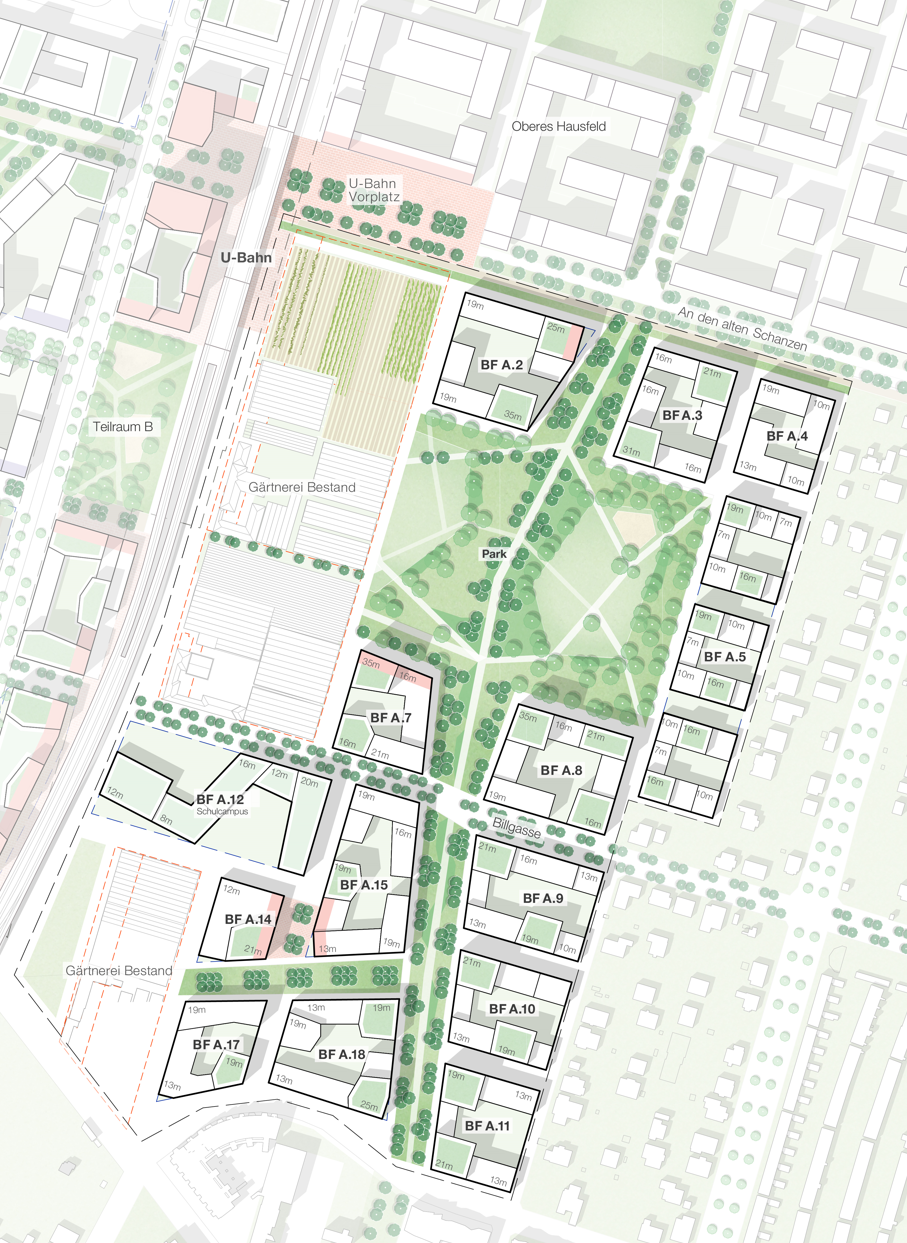SEK Hausfeld
Year
2021-2023
Status
completed
Location
Vienna, Austria
Client
Stadt Wien
Collaboration
Raumposition, Traffix Verkehrsplanung
The Hausfeld district is undergoing thoughtful and comprehensive development, allowing for the gradual implementation of distinct areas through integrated planning. Due to its excellent connection to the subway network, Hausfeld currently enjoys effective public transportation, and the objective is to seamlessly link these transportation hubs to pedestrian and cycling networks. To reduce car traffic, motorized individual vehicles will be concentrated in specific corridors, and parking spaces will be centrally organized in collective garages. Establishing the new district involves integrating kindergartens and schools as potential community centers at optimal locations.
In Hausfeld, the manufacturing sector holds a central position, emphasizing the development of a sustainable business location and the harmonious integration of various uses. Local hubs and prominent landmarks act as guideposts for central pathways within the community, fostering high activity, vibrancy, and urban character. High-quality green spaces, connected to Hausfeld through the Viennese green space network, are intended to be easily accessible and usable, while new public areas are being created to address increasing demands. Sustainable resource management, adapting to high temperatures, and innovative rainwater handling are fundamental principles for creating a climate-resilient neighborhood.
DE
Der Stadtteil Hausfeld wird vorausschauend und ganzheitlich entwickelt, wobei eine integrierte Planung die schrittweise Umsetzung einzelner Teilräume ermöglicht. Dank seiner optimalen Anbindung an das U-Bahnnetz ist das Hausfeld bereits heute gut mit öffentlichem Verkehr versorgt, und das Ziel besteht darin, diese Mobilitätsknoten bestmöglich an Fuß- und Radwegen anzuschließen. Um den Durchzugsverkehr zu minimieren, wird der motorisierte Individualverkehr auf wenige Korridore gebündelt, und Stellplätze sollen zentral in Sammelgaragen organisiert werden. Die Schaffung des neuen Stadtteils erfordert die Integration von Kindergärten und Schulen als potenzielle Nachbarschaftszentren an optimalen Standorten.
Im Hausfeld hat das produzierende Gewerbe einen zentralen Stellenwert, wobei ein zukunftsfähiger Standort für Betriebe entwickelt und andere Nutzungen verträglich integriert werden sollen. Lokale Zentren und prägende Orte dienen als Orientierungspunkte für zentrale Korridore im Quartier, entlang derer eine hohe Frequenz, Lebendigkeit und Urbanität entstehen. Hochrangige Grünräume, über das Wiener Freiraumnetz mit dem Hausfeld verbunden, sollen gut zugänglich und nutzbar gemacht werden, während neue öffentliche Räume geschaffen werden, um den wachsenden Bedarf zu decken. Ein nachhaltiger Umgang mit Ressourcen, die Anpassung an hohe Temperaturen und ein innovativer Umgang mit Regenwasser sind zentrale Prinzipien für einen klimawandelangepassten Stadtteil.






